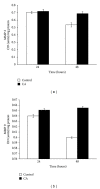Inhibition of Angiogenesis In Vitro by Chebulagic Acid: A COX-LOX Dual Inhibitor
- PMID: 24288615
- PMCID: PMC3833124
- DOI: 10.1155/2013/843897
Inhibition of Angiogenesis In Vitro by Chebulagic Acid: A COX-LOX Dual Inhibitor
Abstract
Angiogenesis is a crucial step in the growth of cancer and its metastasis. It is regulated by several endogenous factors which may stimulate or inhibit the new blood vessel growth. Besides these endogenous factors, several exogenous factors including some natural compounds are known to modulate angiogenesis. Angiogenesis being a potential target for drugs against a number of pathological conditions, search for compounds from natural sources that can affect angiogenesis is of great interest. The objective of our present study was to understand the effect of chebulagic acid, a COX-LOX dual inhibitor isolated from the fruits of Terminalia chebula Retz., on angiogenesis. The model systems used were rat aortic rings and human umbilical vein endothelial cells. The results showed that chebulagic acid exerts an antiangiogenic effect. This was evidenced from decreased sprouting in rat aortic rings and decrease in biochemical markers in endothelial cells treated with chebulagic acid. It downregulated the production of CD31, E-selectin, and vascular endothelial growth factor in human umbilical vein endothelial cells in culture (HUVEC). Further studies to understand the molecular mechanism of action of chebulagic acid revealed that CA exerts its anti angiogenic effect by modulating VE cadherin-β catenin signalling in human umbilical vein endothelial cells.
Figures






References
-
- Hanahan D, Weinberg RA. Hallmarks of cancer: the next generation. Cell. 2011;144(5):646–674. - PubMed
-
- Carmeliet P. Blood vessels and nerves: common signals, pathways and diseases. Nature Reviews Genetics. 2003;4(9):710–720. - PubMed
-
- Hanahan D, Folkman J. Patterns and emerging mechanisms of the angiogenic switch during tumorigenesis. Cell. 1996;86(3):353–364. - PubMed
-
- Bouck N. Tumor angiogenesis: the role of oncogenes and tumor suppressor genes. Cancer Cells. 1990;2(6):179–185. - PubMed
-
- Reddy DB, Reddanna P. Chebulagic acid (CA) attenuates LPS-induced inflammation by suppressing NF-κB and MAPK activation in RAW 264.7 macrophages. Biochemical and Biophysical Research Communications. 2009;381(1):112–117. - PubMed
LinkOut - more resources
Full Text Sources
Other Literature Sources

